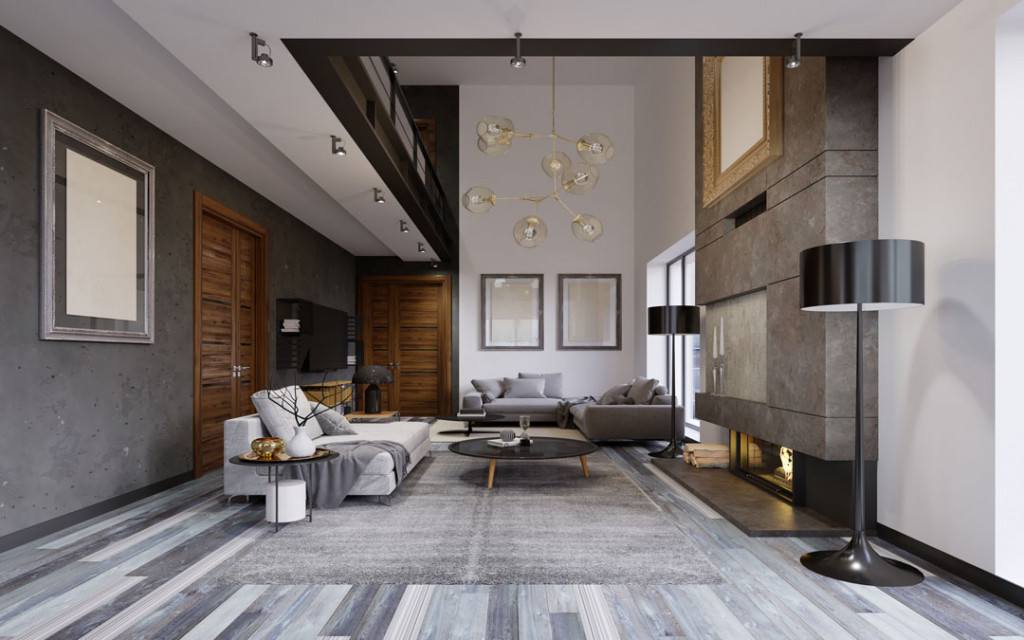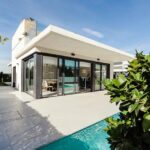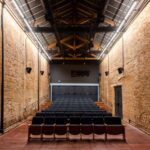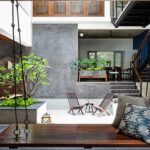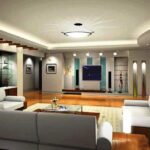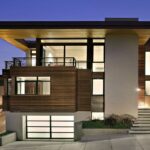Constructing a villa in Texas style involves incorporating architectural and design elements that reflect the rich cultural heritage and unique characteristics of the region. Texas-style villas often blend traditional Southern architecture with modern influences, resulting in a home that is both elegant and comfortable. Here’s an overview of the key aspects to consider:
1. Architectural Design:
- Facade and Exterior:
- Stone and Brick: Texas-style villas often feature natural stone or brick exteriors, giving them a rustic yet elegant look. Limestone, sandstone, and red brick are common choices.
- Large Covered Porches: Wrap-around porches with large columns or arches are a staple, providing shade and a welcoming entrance.
- Gable Roofs: Steeply pitched gable roofs, sometimes with metal roofing, are typical. These roofs not only enhance the visual appeal but also help with drainage and cooling.
- Tall Windows and Shutters: Large, tall windows with traditional shutters are common, allowing for plenty of natural light and ventilation.
- Layout:
- Open Floor Plans: Emphasize spaciousness with open floor plans that combine the living, dining, and kitchen areas. This creates a flow that is ideal for both family life and entertaining.
- High Ceilings: High or vaulted ceilings are characteristic of Texas-style homes, contributing to a sense of grandeur and openness.
- Outdoor Living Spaces: Incorporate outdoor kitchens, patios, or even courtyards that extend the living area into the outdoors, taking advantage of the warmer climate.
2. Interior Design:
- Materials and Finishes:
- Natural Wood: Use of natural wood for flooring, beams, and cabinetry. Oak, pine, and cedar are popular choices.
- Stone Accents: Stone fireplaces, accent walls, or countertops made from local materials like granite or marble.
- Neutral Color Palette: Earth tones and neutral colors are typical, with whites, browns, and beiges dominating. Accent colors can be introduced through decor elements like rugs, cushions, or artwork.
- Furniture and Decor:
- Rustic Furniture: Incorporate rustic, sturdy furniture made from wood or wrought iron. Leather upholstery is also common, particularly in the living areas.
- Southwestern or Western Decor: Decor elements such as cowhide rugs, antler chandeliers, and artwork featuring Western themes or local landscapes.
- Warm Lighting: Use warm, ambient lighting with fixtures that have a rustic or vintage feel, such as wrought iron chandeliers or lantern-style sconces.
3. Landscaping:
- Native Plants: Utilize native Texan plants like yucca, agave, and live oak trees, which are well-suited to the local climate and add authenticity to the design.
- Outdoor Features: Consider adding features like a stone fire pit, a swimming pool with a natural stone surround, or a water feature that blends seamlessly with the landscape.
- Fencing and Pathways: Use stone or wood for pathways and fencing, creating a natural flow throughout the property.
4. Sustainability:
- Energy Efficiency: Incorporate energy-efficient windows, insulation, and HVAC systems to keep the home comfortable and reduce energy costs.
- Water Conservation: Use drought-resistant landscaping and consider rainwater harvesting systems to conserve water.
- Solar Panels: Given the abundant sunshine in Texas, solar panels can be a practical addition to reduce reliance on grid power.
5. Customization and Personal Touches:
- Personalized Spaces: Customize rooms to reflect personal interests or needs, such as a home office, a wine cellar, or a game room.
- Local Art and Craftsmanship: Incorporate locally made furniture, art, and craftsmanship to give the villa a unique, personalized feel.
Constructing a Texas-style villa involves blending traditional architectural elements with modern conveniences, all while reflecting the character and charm of the region. The result is a home that is not only beautiful and functional but also deeply connected to its surroundings.

